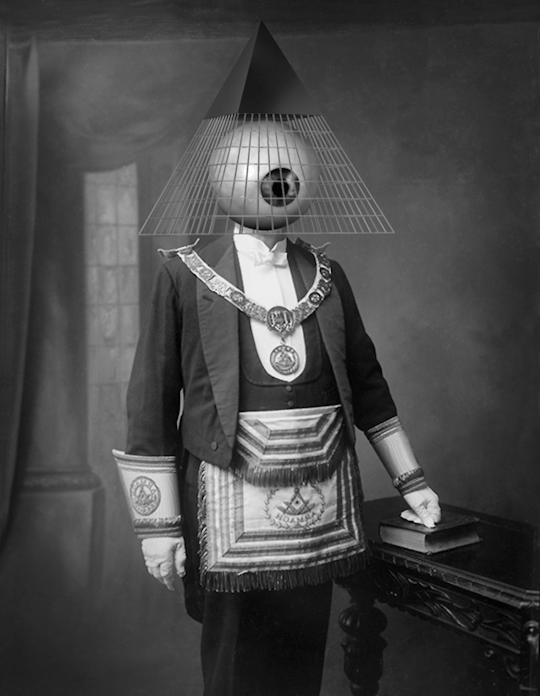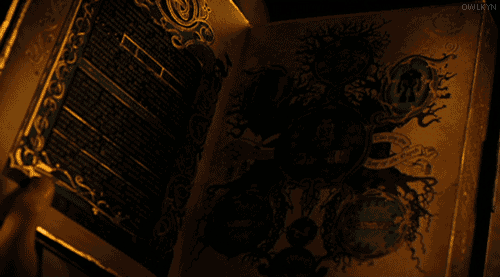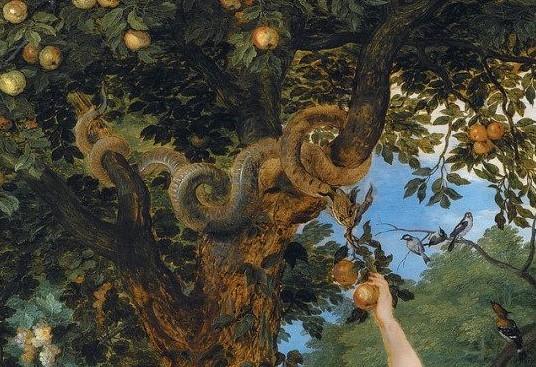#tree of wisdom
Explore tagged Tumblr posts
Text
pyramids
The word pyramid is popularly supposed to be derived from πῦρ, fire, thus signifying that it is the symbolic representation of the One Divine Flame, the life of every creature. John Taylor believes the word pyramid to mean a "measure of wheat, " while C. Piazzi Smyth favors the Coptic meaning, "a division into ten."

The twelve signs of the zodiac, like the Governors' of the lower worlds, are symbolized by the twelve lines of the four triangles--the faces of the Pyramid. What else could the Zodiac rep the number 12= 3 threefold spiritual body In the midst of each face is one of the beasts of Ezekiel, and the structure as a whole becomes the Cherubim. The three main chambers of the Pyramid are related to the heart, the brain, and the generative system--the spiritual centers of the human constitution. The triangular form of the Pyramid also is similar to the posture assumed by the body during the ancient meditative exercises. The Mysteries taught that the divine energies from the gods descended upon the top of the Pyramid, which was likened to an inverted tree with its branches below and its roots at the apex. From this inverted tree, the divine wisdom is disseminated by streaming down the diverging sides and radiating throughout the world. ( Lungs - look like the inverted tree ... wisdom coming down because the brain ...when we breathe out )
The temple is complete only when the initiate himself becomes the living apex through which the divine power is focused into the diverging structure below.
Relating Hermes to the Pyramid emphasizes anew the fact that it was in reality the supreme temple of the Invisible and Supreme Deity.

The power to know his guardian spirit was revealed to the new initiate; the method of disentangling his material body from. his divine vehicle was explained; and to consummate the MAGNUM OPUS, in derivatives "sky, heaven, god." there was revealed the Divine Name--the secret and unutterable designation of the Supreme Deity, by the very knowledge of which man and his God are made consciously one.

Supreme Deity - "highest, "situated above, - " divine nature, godhood, attributes of a god; "to shine," in derivatives "sky, heaven, god."" /heaven, space, high level, ascension God - to call, invoke "divine entity summoned to a sacrifice.""invoked, Man The Pyramid again shall stand as the ideal emblem of solidarity, inspiration, aspiration, resurrection, and regeneration. As the passing sands of time bury civilization upon civilization beneath their weight, the Pyramid shall remain as the Visible covenant between Eternal Wisdom and the world. The time may yet come when the chants of the illumined shall be heard once more in its ancient passageways and the Master of the Hidden House shall await in the Silent Place for the coming of that man who, casting aside the fallacies of dogma and tenet, seeks simply Truth and will be satisfied with neither substitute nor counterfeit.

#life#tree#tree of knowledge#tree of life#tree of wisdom#tree of growth#tree of might#trees#palm trees#pyramid#egyptian pyramids#saturn#deity work#deities#10#9
1 note
·
View note
Text
Was talking to a friend and I had the most insane idea, imagine if they added Rattlin’ Bog to Just Dance and you had to copy the Tree of Wisdom’s moves 😂😭
7 notes
·
View notes
Text
We've all seen the talk about the tree of wisdom in the wiggles the rattlin bog song... but is anyone talking about the buff purple wiggle in the bouncing balls song, or...?
#random#the wiggles#rattlin bog#tree of wisdom#bouncing balls#purple wiggle#i dont know that mans name but you know who im talking about right?#when hes not making educational entertainment for toddlers hes making thirst traps on tiktok?#this is not a criticism btw just an observation#ramblings#mumblr
4 notes
·
View notes
Text

Tree of wisdom throwing it back
18 notes
·
View notes
Text

He such a goofy boy
13 notes
·
View notes
Text
Currently, nothing makes me smile or laugh harder than videos of the Wiggles’s Tree of Wisdom dancing 😂😂
1 note
·
View note
Text

#tree of life#tree of wisdom#qlippoth#balance#sephiroth#crossroads#haen de lavi#soundcloud#tree of death
1 note
·
View note
Text

Tree of Wisdom (2023) by Albert Dros
1 note
·
View note
Text

The Tree of Wisdom
361 notes
·
View notes
Text
Headcanon time!! Dominic likes to just torment Lachy by keeping him on edge, not knowing what moves he’s going to pull off next (video evidence below) 😂
19 notes
·
View notes
Text

A tree of wisdom ring bought to me by my Grandma. Heil Wotan.
#tree of wisdom#tree of life#pagan#paganism#norse paganism#celtic paganism#paleo balkan paganism#slavic paganism#odin#wotan
14 notes
·
View notes
Photo

Tree of wisdom by erenarik
47 notes
·
View notes
Text

Ningishzida
Mesopotamian god of the tree of wisdom
Ningishzida’s name means "Lord of the Good Tree", which is also known as “The Tree of Death”. It is this sacred tree that grants wisdom once eaten from, causing a “death” to one’s ignorance and a rebirth through knowledge. This tree is also an entrance to the Underworld, since wisdom comes from allowing one’s current self to die. Its sister-tree is the “Tree of Life” which is equivalent to Yggdrasil.
In depictions, Ningishzida is shown as either a large serpent, a serpent with the head of a man, a crowned man with snakes coming from his shoulders, or as a double-headed serpent that is coiled into a double helix. This last representation makes him the first appearance of the caduceus symbol, predating the one shown with Hermes and Asclepius in Greece. In another depiction, Ningishzida is shown beside the Tree of Death (a unique tree that is shown bearing some sort of fruit), along with two griffins, which are divine protectors. Ningishzida is also associated with dragons, the mušhuššu and balm. He is also referred to as a snake, (muš-mah, meaning “exalted serpent”). Due to these, he is moreso a serpentine-dragon, rather than just a serpent.
Myths: In mythology, Ningishzida is one of the deities thought to travel to the Underworld (Kur) during the dead seasons (mid-summer to mid-winter); the other deity being Dumuzi. These two gods are also featured in the myth of Adapa, one of the first humans. When Adapa is commanded to arrive before Anu, god of the heavens, after speaking a curse to break the south wind, he sees both Ningishzida and Dumuzi placed as guards for Anu’s celestial palace. As for Ningishzida's chthonic connections, a title of his is “gu-za-lá-kur-ra” (the chair-bearer of the netherworld). He is also the overseer for the twin-gods who guard the gates of the Underworld: Lugal-irra and Meslamta-ea. An additional role of his is being involved with divine law in both the Underworld and on Earth, making him a guardian/overseer of many things.
The Tree of Death had also been linked with the serpent or dragon (winged serpent) for over 1,000 years before Genesis was written. In 2025 BC, the cup of the Sumerian King Gudea of Lagash showed two winged dragons holding back a pair of opening doors to reveal a caduceus of uniting snakes, the incarnation of the god Ningishzida, to whom the cup is inscribed: “Lord of the Tree of Truth”. In northern Babylonia the goddess who embodied the Tree of Wisdom was called the “Divine Lady of Eden” or “Edin”, and in the south she was called the “Lady of the Vine”, an understandable change of name given that the Sumerian sign for ‘life’ was originally a vine leaf.
Appearance: Ningishzida is an enormous serpent with yellow eyes and a body that is over 30 meters in length. His body is made out of black Sumerian syllables that shift all around his form, due to his power of words. He also has shimmering black plumes on his head and around his neck. While his form is that of a great serpent, he is a species of dragon and has similar abilities to them.
Personality: Ningishzida is reserved, serious, highly intelligent and wise, honest, diligent, intuitive, and deeply loyal. He is a highly respectable being and seeks to teach promising humans of true wisdom and knowledge. He has said that the path to true wisdom is a painful one and very few make it; yet those who do are fully reborn. Just like a serpent, they must shed themselves and become anew. Although the majority of humans do not impress him anymore; he wishes to work only with those who fully love truth and are willing to achieve spiritual evolution despite the strife it costs. He dislikes laziness, pretentiousness, cruelty, stubbornness, and those who prefer to believe lies in order to be comfortable. Ningishzida has also stated that he is neither Lucifer nor Satan, or any other demon; he teaches very similar things as Lucifer and is on good terms with him, but they are not the same. Overall, Ningishzida is a god of vast knowledge and wisdom who seeks to bring enlightenment to those who prove themselves worthy to him.
The Story of the Tree of Death: Ningishzida has described that the tree mentioned in Biblical texts is indeed his own tree, but the actual event was much different than described. He tells that when humans were being created, it was done so through guided evolution. The birth-place of the final result for humanity took place within several gardens full of life upon Earth, such as Dilmun and Eden (e-din: “the land between two rivers”; i.e. a location within Mesopotamia). When the humans were created within these sacred gardens, they were not actually created in pairs, but as large groups. This is because there is no possible way that two humans alone could populate the Earth. Once these humans were created, they were often visited by certain deities (such as Enki, their creator), as well as some dragons. The dragons are a race of beings who possess advanced intelligence and wisdom, many of them are also deities. These beings all came to the humans in order to teach them and show them how to become independent. One such mentor to the humans was the serpentine-dragon himself, Ningishzida, who guarded the Tree of Wisdom.
These gardens of paradise were select areas upon Earth that were enhanced with magickal fields due to divine pillars the deities had placed within. This caused the gardens to be otherworldly in their beauty, with plenty of food, water, and even luminescent architectures where the humans could live. The Tree of Death is a divine tree of otherworldly beauty that was projected into each of these sacred gardens, each one being protected by Ningishzida. These gardens were to serve as temporary dwelling places for the new humans, allowing them to be closely mentored until they were fully ready to become independent. Once a human made it far enough in their training, Ningishzida would allow them to eat from his tree and become truly wise.
However, the tyrant Aeon god, Jehovah, sought to take Earth as his own by manipulating mankind. He managed to convince many humans that they were being held captive in these gardens and that eating from the Tree of Death meant literal death, in order to prevent them from becoming wise. Due to this, very few humans got to eat from the fruits of wisdom. Thinking that their mentors had been corrupting them all along, the humans prematurely left from the gardens and convinced others to do the same. Once many had left, the humans gradually began to realize how difficult surviving on Earth actually was and tried to enter one of the remaining gardens. But in order to keep the humans inside this garden safe, the deities prevented them from entering and guarded the entrances with flaming swords. In a rage, the humans attacked the divine pillars of all the gardens, causing them to lose their magick essences. The gardens of paradise thus lost their power and became nothing but regular places of nature, eventually being absorbed into the rest of the landscape.
Believing the lies of Jehovah that the fruits had condemned them all to a painful fate, the humans placed the blame on Ningishzida and the rest of the dragons. They raged at their old mentors and cursed their names. It did not take long until the humans began hunting down the dragons in order to kill them, though only succeeding a few times. This act of treachery greatly angered the draconic beings and eventually, they abandoned the humans to completely fend for themselves on Earth. All because of the coaxing of Jehovah, a long history began of humans portraying the dragons as evil and selfish, whereas humans are their victims. However, the humans who had remained in the gardens did not end up following Jehovah, which allowed them to pass down an actual record of the divinities and how Ningishzida represents truth. Unfortunately, a lot of the records were eventually destroyed by zealots and this act of giving wisdom was twisted into meaning something “evil” for many people. Overtime, this account was reformed and simplified into the Abrahamic texts (along with plenty of other Mesopotamian myths). The humans “Adam and Eve” are representations of humanity overall, and the giver of wisdom, Ningishzida, is portrayed as a devil.
Devotional actions: Ningishzida mainly prefers offerings of action over physical offerings. He can be honoured through actions such as gaining knowledge, overcoming your Ego so wisdom can develop, making mystical pilgrimages for enlightenment, seeking deeper meaning of yourself, and allowing the struggles of life to transform you for the better.
Offerings: lapis lazuli, amethyst, bitter oranges (signify the bittersweet taste of wisdom), snakeskin, desert sand, cedar trees, skulls (represent death), femur bones (contain the oldest tissues), Arab incense, incense of oud, amber, saffron, or saffron + rose
#ningishzida#the tree of death#tree of wisdom#garden of eden#mesopotamian gods#sumerian gods#draconic gods#serpent of wisdom#gardens of paradise#mesopotamian polytheism#sumerian polytheism#biblical#jehovah#the usurper#adam and eve#deity work#draconic work#spiritual evolution#illumination
148 notes
·
View notes
Text
The Tree of Widsom did not need to go THAT HARD 🤣 Man deserves a raise after that!
25 notes
·
View notes